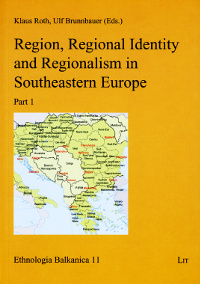The Cross With Four Pillars as the Centre of Religious Gathering: Discussing Micro Regional Identity
The Cross With Four Pillars as the Centre of Religious Gathering: Discussing Micro Regional Identity
Author(s): Aleksandra ĐurićSubject(s): Anthropology
Published by: LIT Verlag
Keywords: identity; Banat; Serbia; Romanians; religion;
Summary/Abstract: The paper presents field research in three villages in the Serbian Banat inhabited by Romanians (Sočica, Jablanka and Kuštilj), and a Romanian village (Vrani) on the other side of the Serbian-Romanian border, which have had contacts for many decades. Romanians have settled in the Banat since the Middle Ages, but massive Romanian immigration took place as part of the Habsburg colonization in the eighteenth and nineteenth centuries. The religious monument called Crucea cu patru stâlpi (the cross with four pillars) was erected in 1843 in the central area between the four villages. This place became the centre of religious gatherings for the villages. Every year at the holiday of Pentecost the peasants would go there, accompanied by their priests. In 1918, with the establishment of the Kingdom of Yugoslavia, the area was divided by a new national border, and the village of Vrani became part of Romania. The research focusses on the question of how strong the influence of this border and historical developments was on keeping the tradition and contacts alive in this region, how the people living in the three Serbian villages perceive the border, and what role this sacred place plays in these processes.
Journal: Ethnologia Balkanica
- Issue Year: 2007
- Issue No: 11
- Page Range: 171-184
- Page Count: 14
- Language: English
- Content File-PDF

